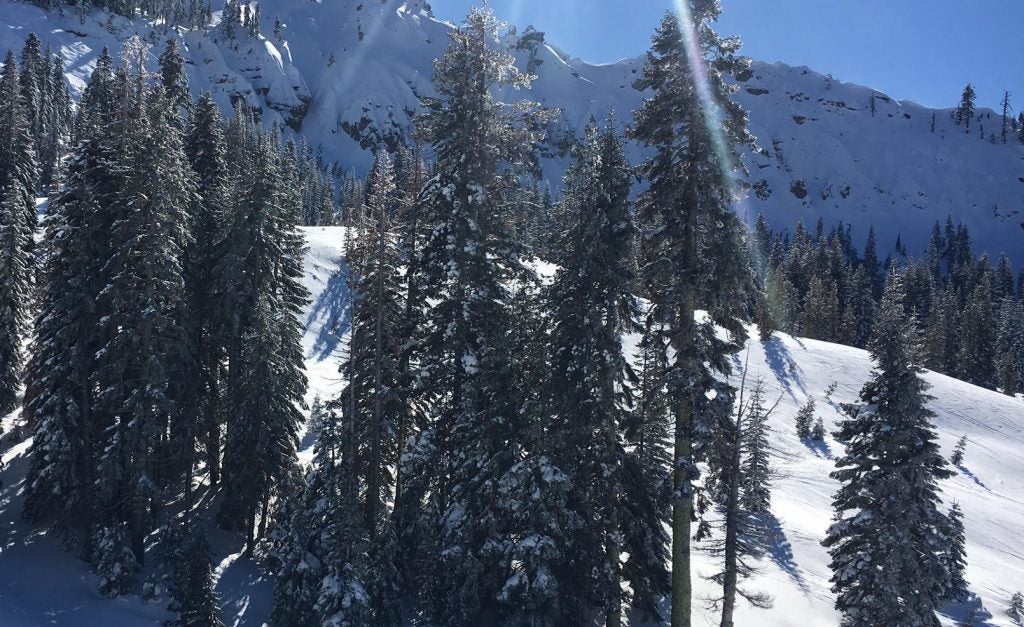It’s a daunting time to be working on water in California.
The Sierra snowpack measurement came in today at 59% of average statewide, making this the second dry winter in a row. The drought conditions led state and federal officials to announce last week painful water cuts for farmers and for municipal water systems that are already sending requests to customers to conserve water.
It’s disheartening to envision farmers again trying to make do with very limited supplies; salmon stranded in warm, dwindling rivers; and cities facing water cutbacks while wondering if the next wildfire will erupt in their neighborhood.
Meanwhile, the importance of clean water to wash our hands has taken on a whole new level of importance with the COVID-19 pandemic, yet nearly 1 million Californians still lack access to clean and affordable drinking water.
With this bleak picture, you can reasonably ask, “What’s there to be hopeful about?” Here are three things that give me hope about our water future.
1. We are making progress to guarantee safe water for all.
Water leaders are really beginning to understand how to address this erratic and unpredictable water supply situation. We have the know-how to manage our water supplies through difficult droughts — if we follow the science, deploy new tools and work together.
Clearly, making sure all Californians have access to clean water should remain the top priority. Fortunately, the state made recent progress to address this by approving a new Safe and Affordable Drinking Water Fund. The state is now working on an assessment that will outline how much more funding is needed to ensure everyone in California has safe and reliable water.
When this report comes out, we need an all-hands-on-deck effort from the state and federal government to fill the funding gap and finally fix this problem. The good news is that California’s latest cap-and-trade auction that directs money to the drinking water fund performed well last month, and the state is on track to have a $19 billion budget surplus this fiscal year.

On average, the snowpack supplies about 30 percent of California’s water needs as it melts. With the snowpack measuring below average for two years in a row, farmers and cities are bracing for water cutbacks.
2. New tools and technologies are coming online to help manage water.
On top of available funding, new tools are coming online to help manage water supplies and develop durable, pragmatic solutions to our water challenges.
This summer, an online platform called OpenET will launch, making much-needed data on the amount of water consumed by crops and other vegetation widely accessible and cost-effective to farmers for the first time.
As regional water managers implement California’s Sustainable Groundwater Management Act (SGMA), OpenET will help them create more accurate water budgets and design effective water trading programs and other tools. It will also help farmers refine irrigation practices and improve their bottom line.
OpenET is already providing data to another tool I’m especially excited about: the open-source accounting and trading platform that EDF co-developed with the Rosedale-Rio Bravo Water Storage District. Conceived in response to SGMA, the platform will help the district and its landowners track water use like an online bank account and eventually trade water.
Combined, OpenET and the accounting and trading platform have the potential to build a better understanding of local water dynamics and enable water managers and landowners to respond with the right local solutions.
Tools like OpenET may prove useful later this year when California crosses another important milestone on the long road toward groundwater sustainability: The state will be releasing reviews of groundwater sustainability plans and will tell groundwater sustainability agencies where more work remains.
3. A new era of cooperation has arrived.
Finally, we have a new federal administration that wants to collaboratively solve problems with California leaders on a number of issues, including water, which Gov. Gavin Newsom has already demonstrated is a high priority.
While it’s anxiety-inducing to be facing yet another drought in California, we are now in a better position to make data-driven decisions, deploy the necessary tools and work together to build a more resilient water future.










One Comment
Great to see some direction to solutions. The part I think needs to be defined better is then”affordable” part:
We cannot “afford” to not fix this, but using previous accounting methods to calculate the “cost” is not constructive.
Greenland has the water, ready to drink. We need to not waste it. We hope to make our proposal to California this quarter.
Jed Maitland-Carter
Director
North Water Greenland ApS